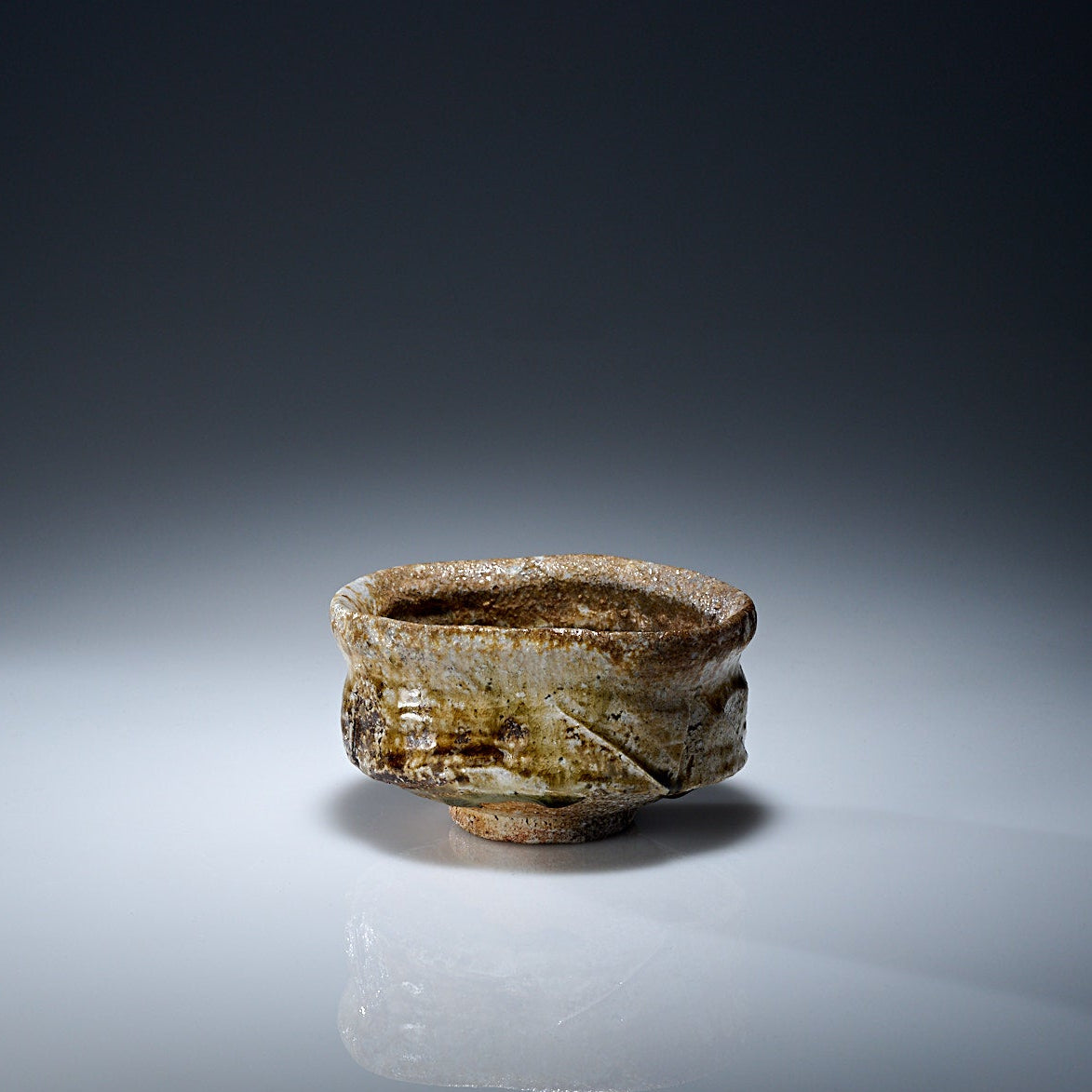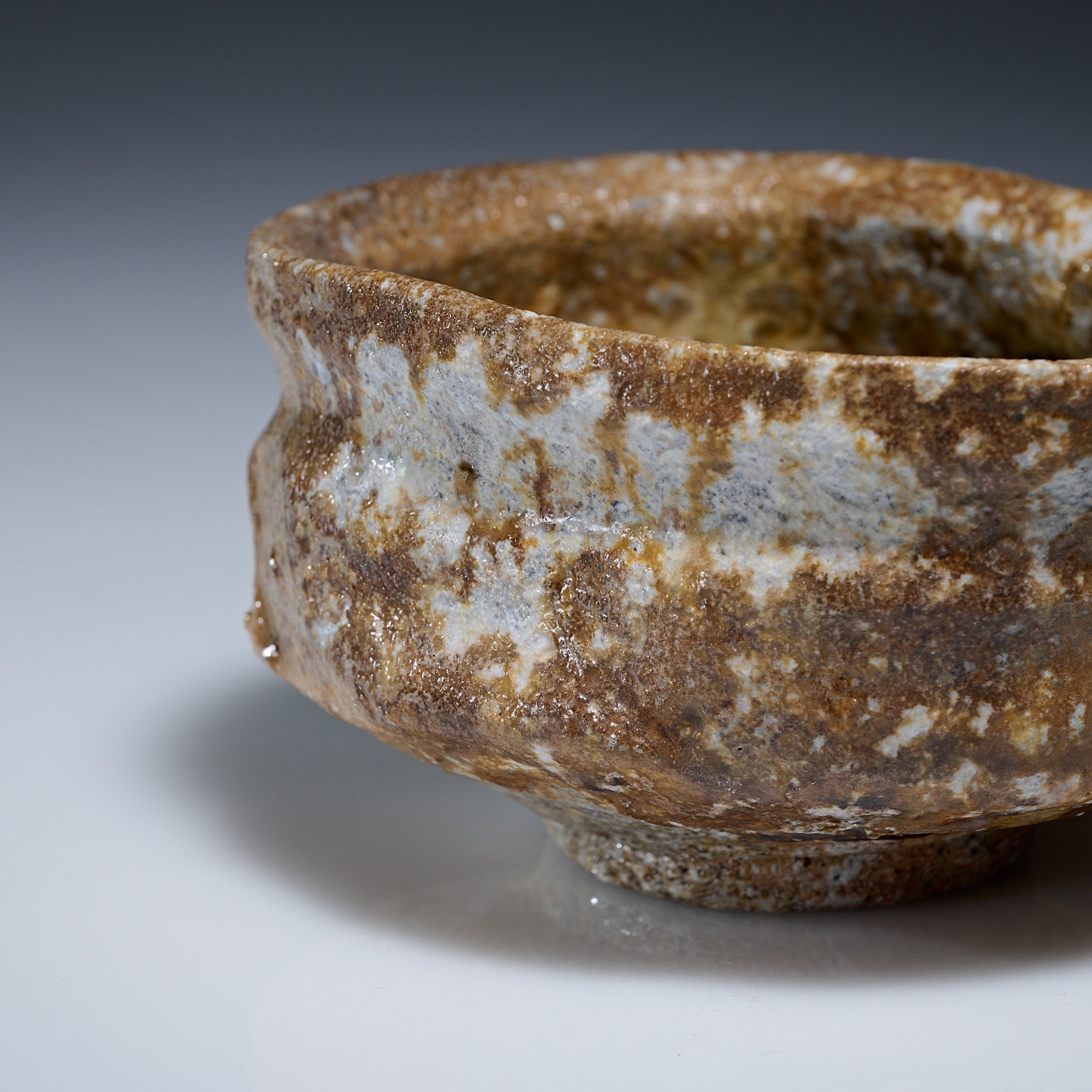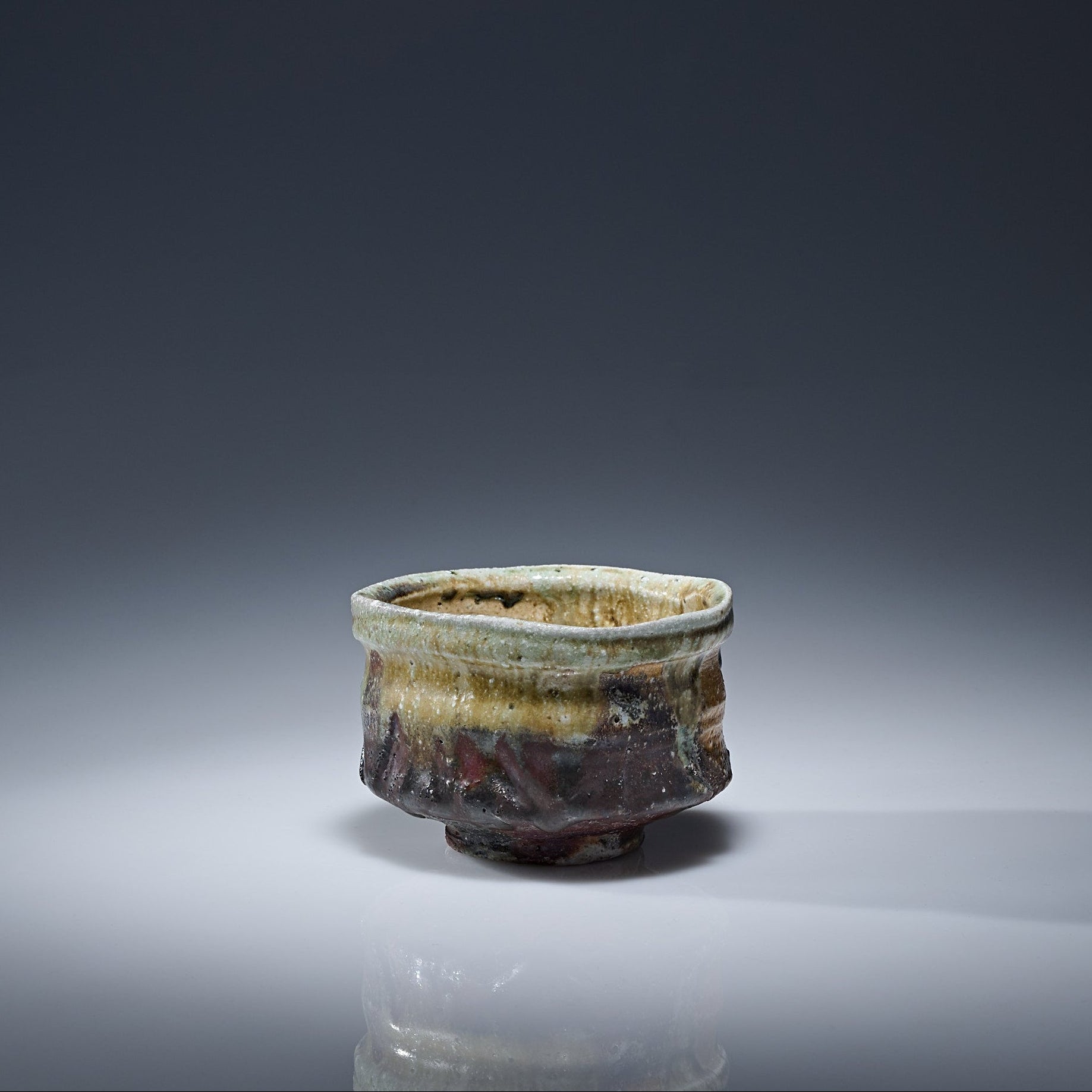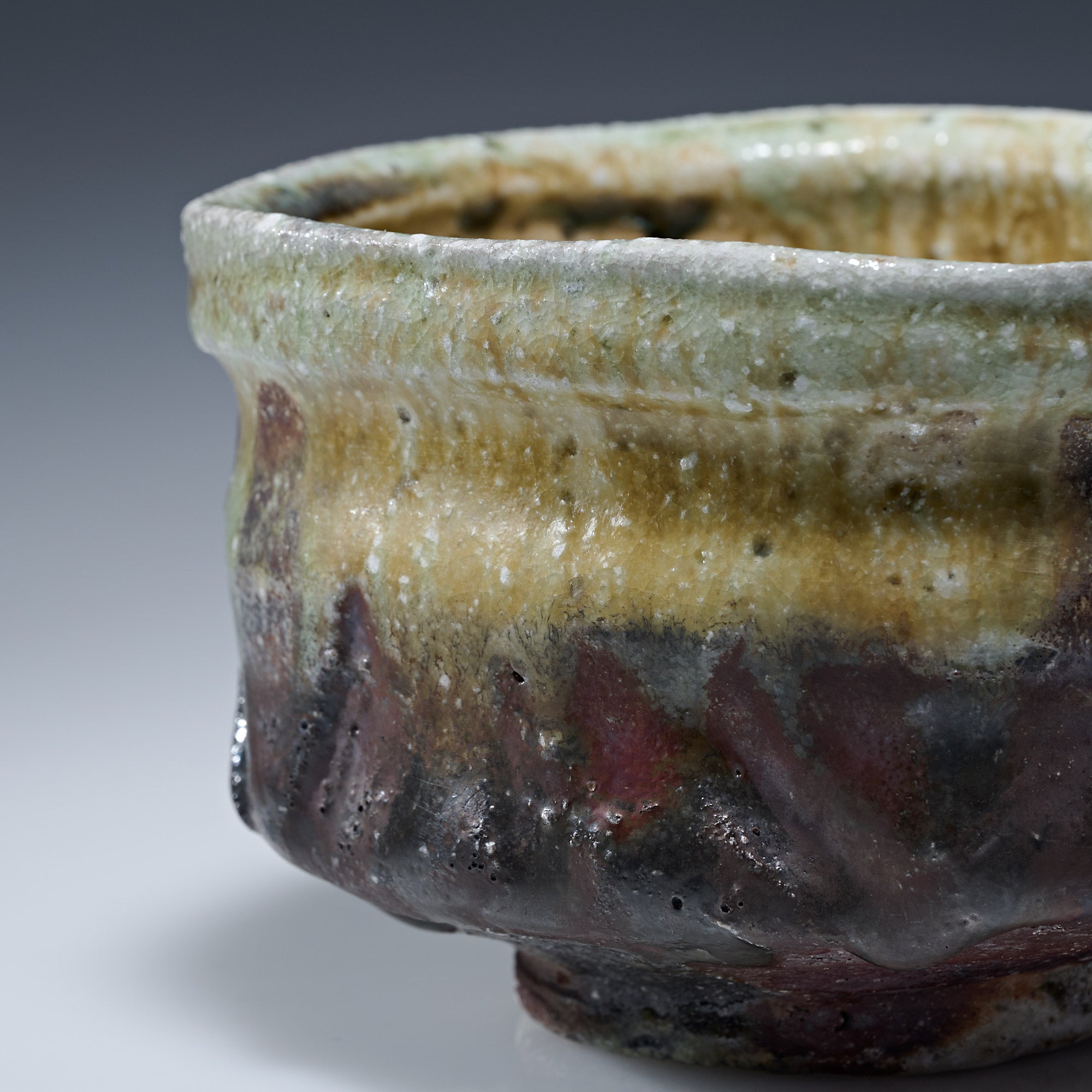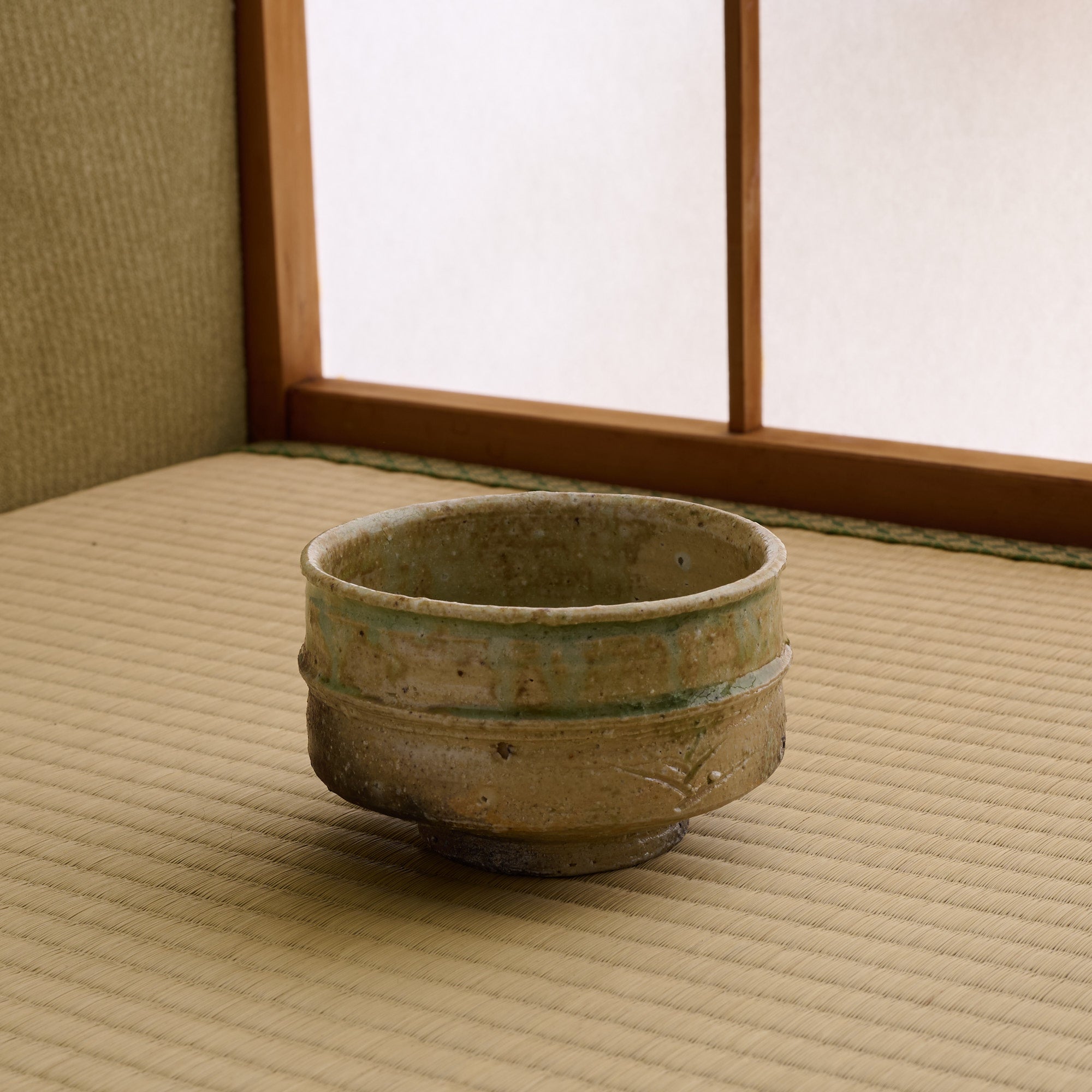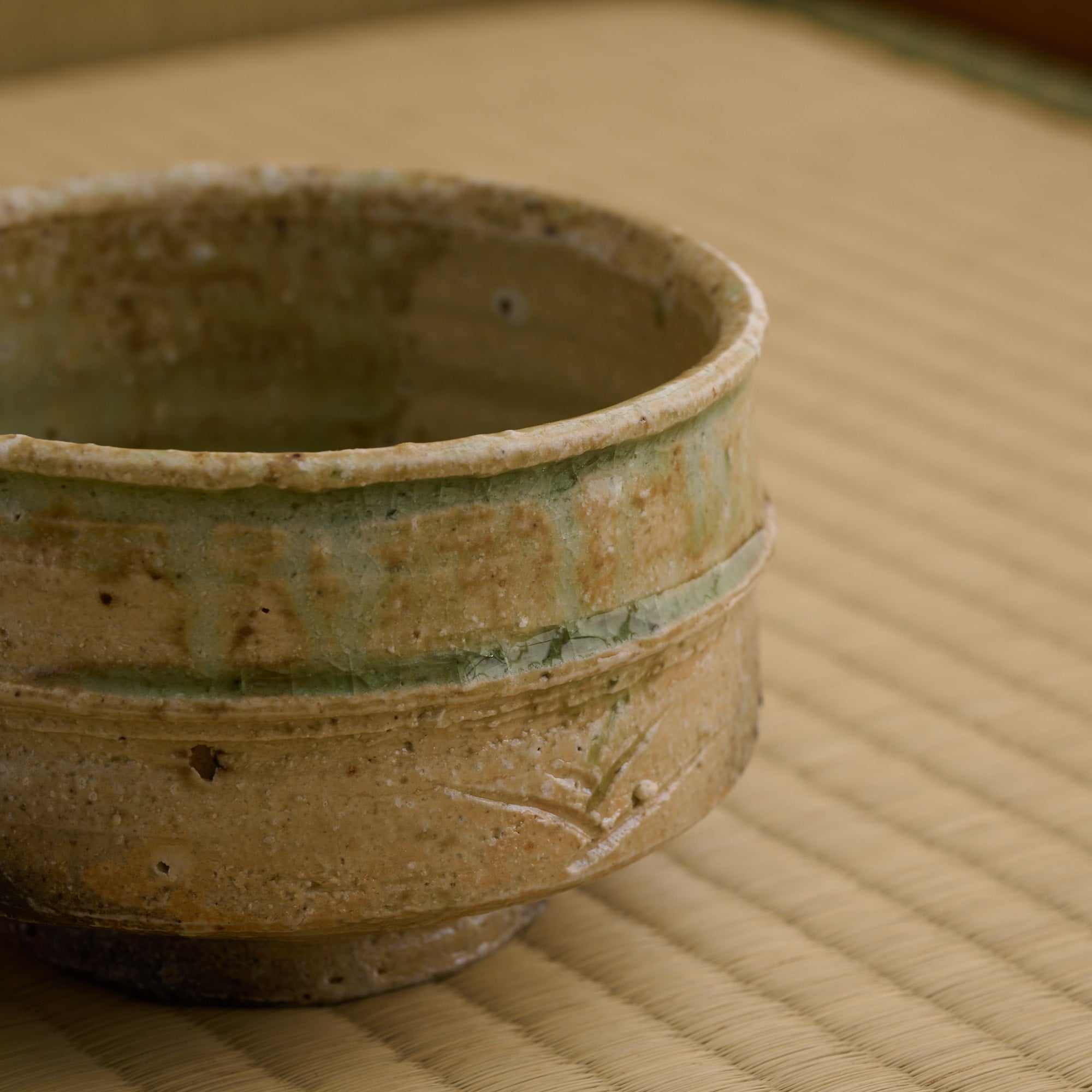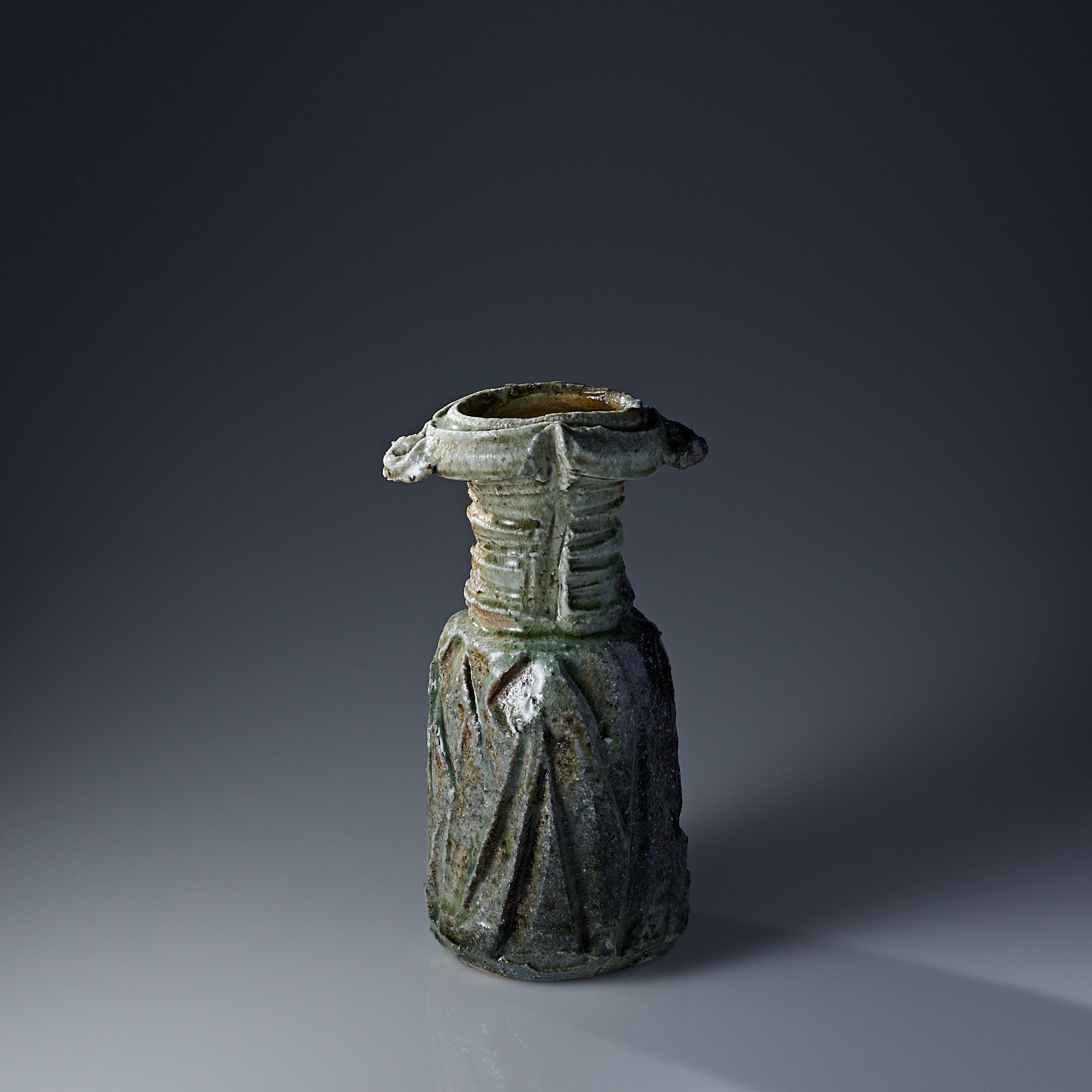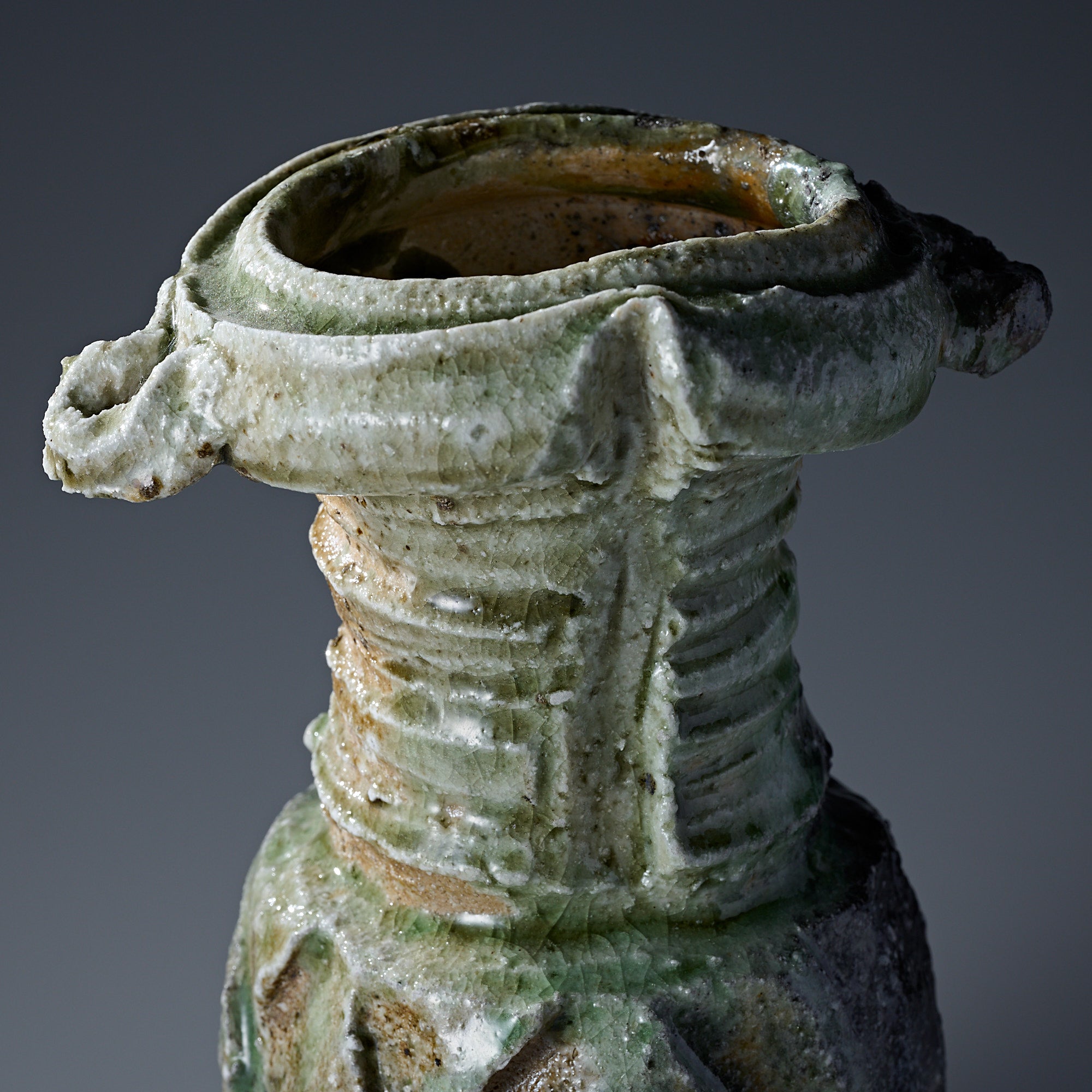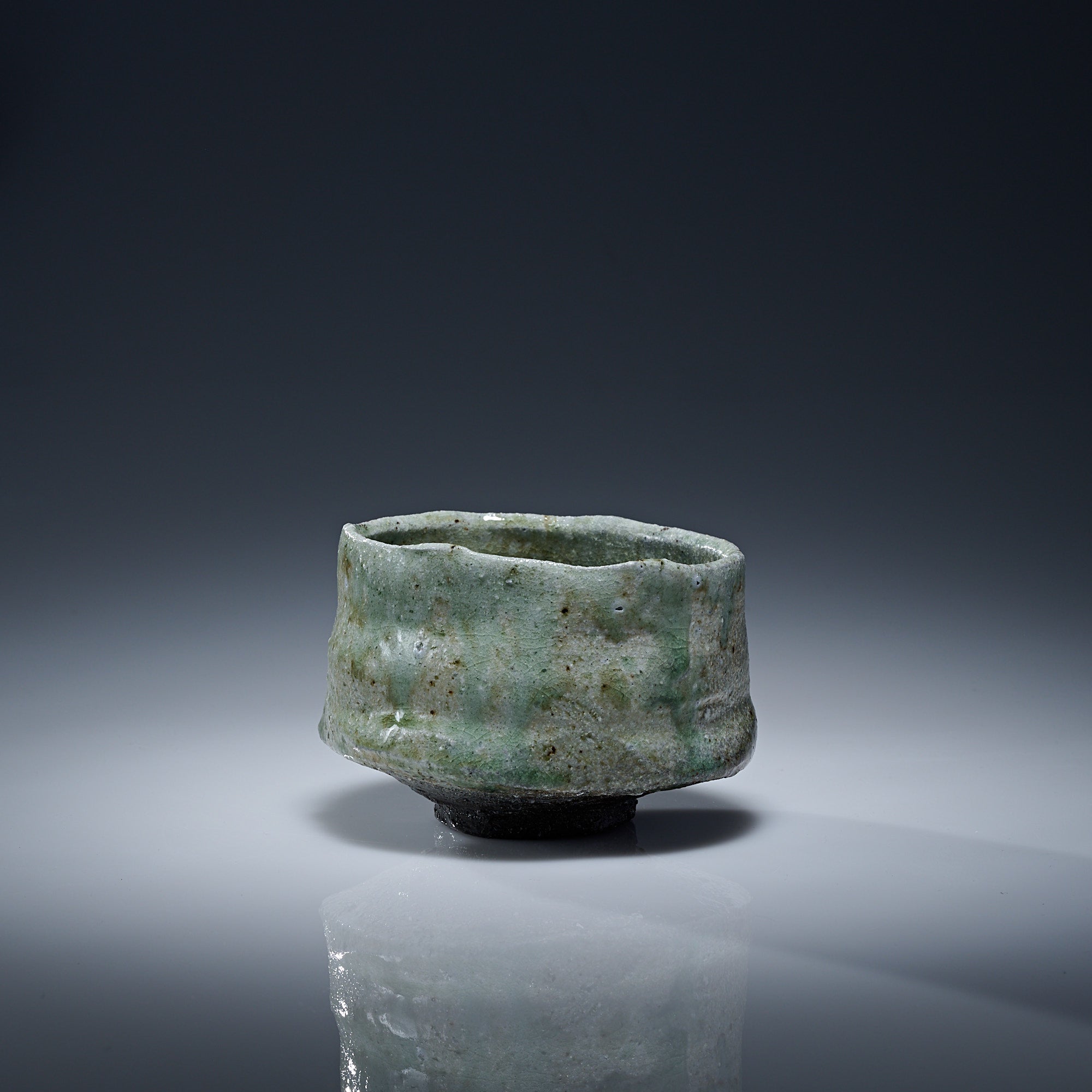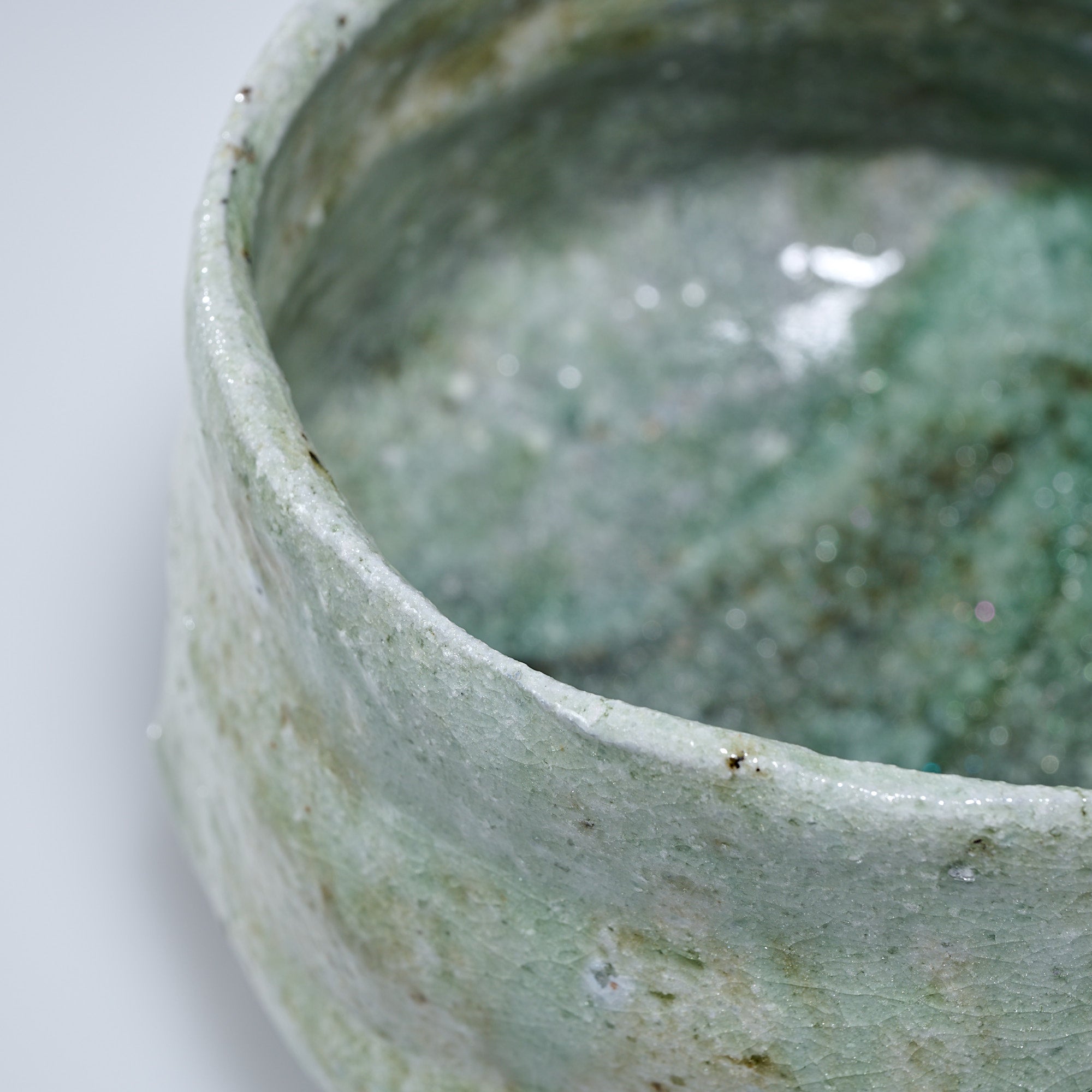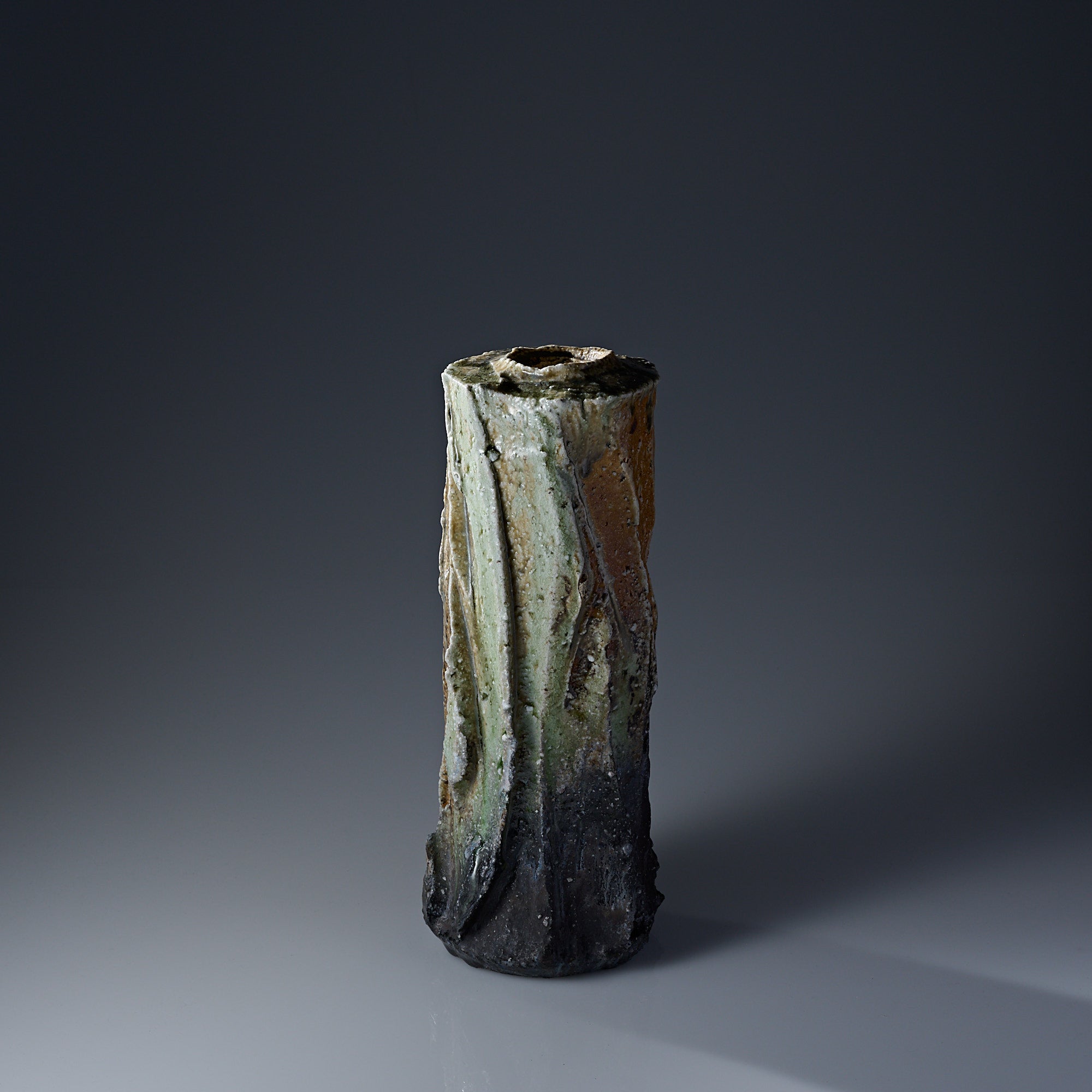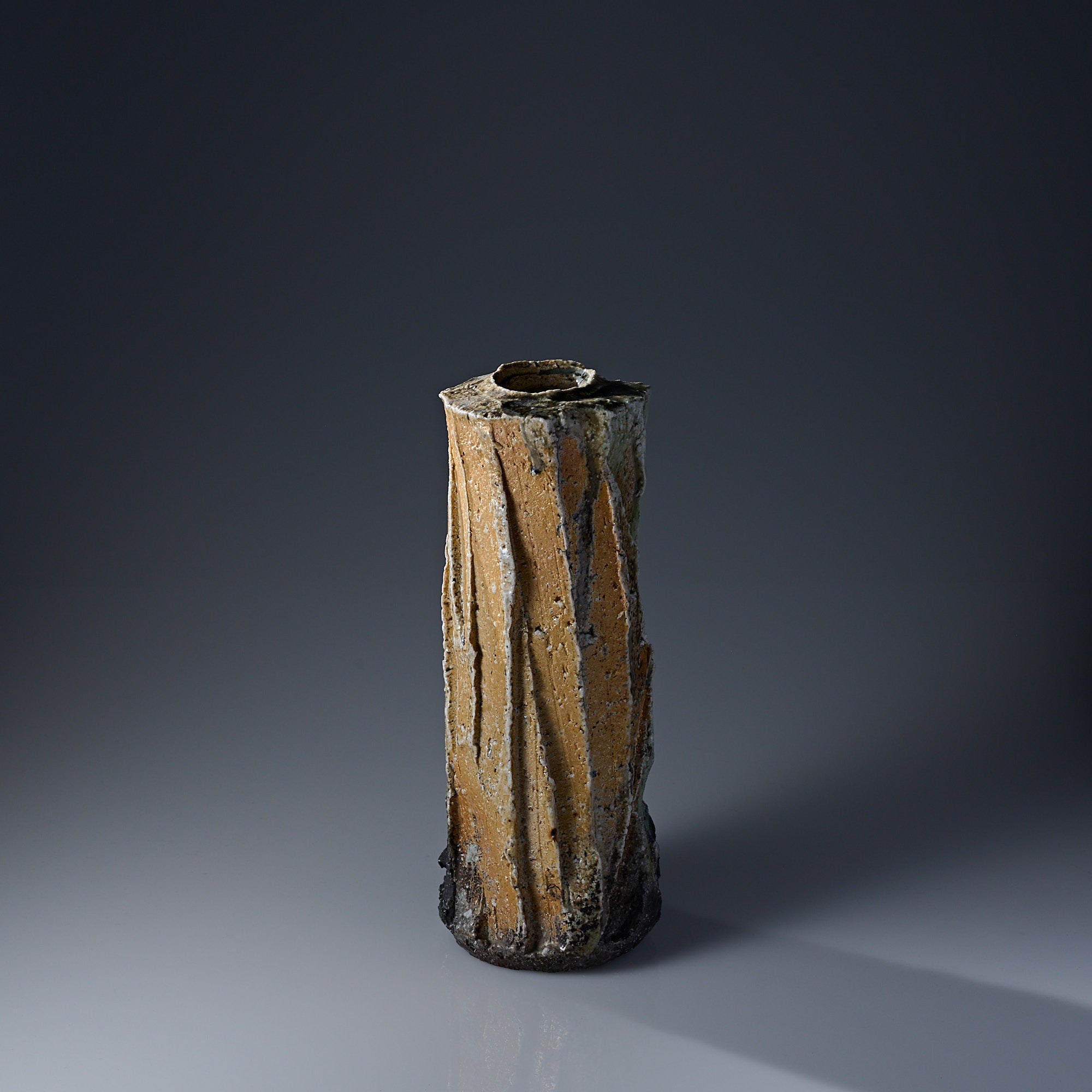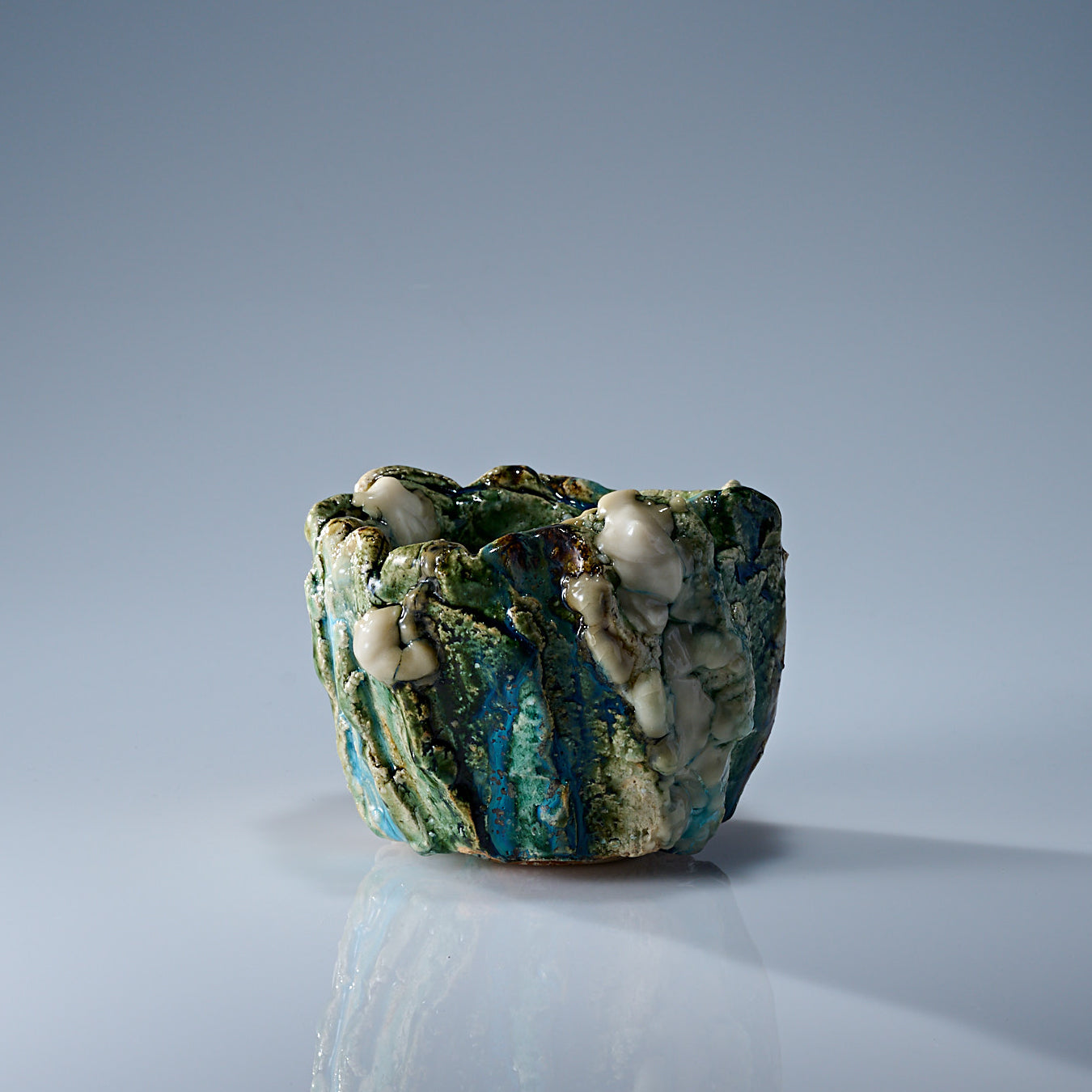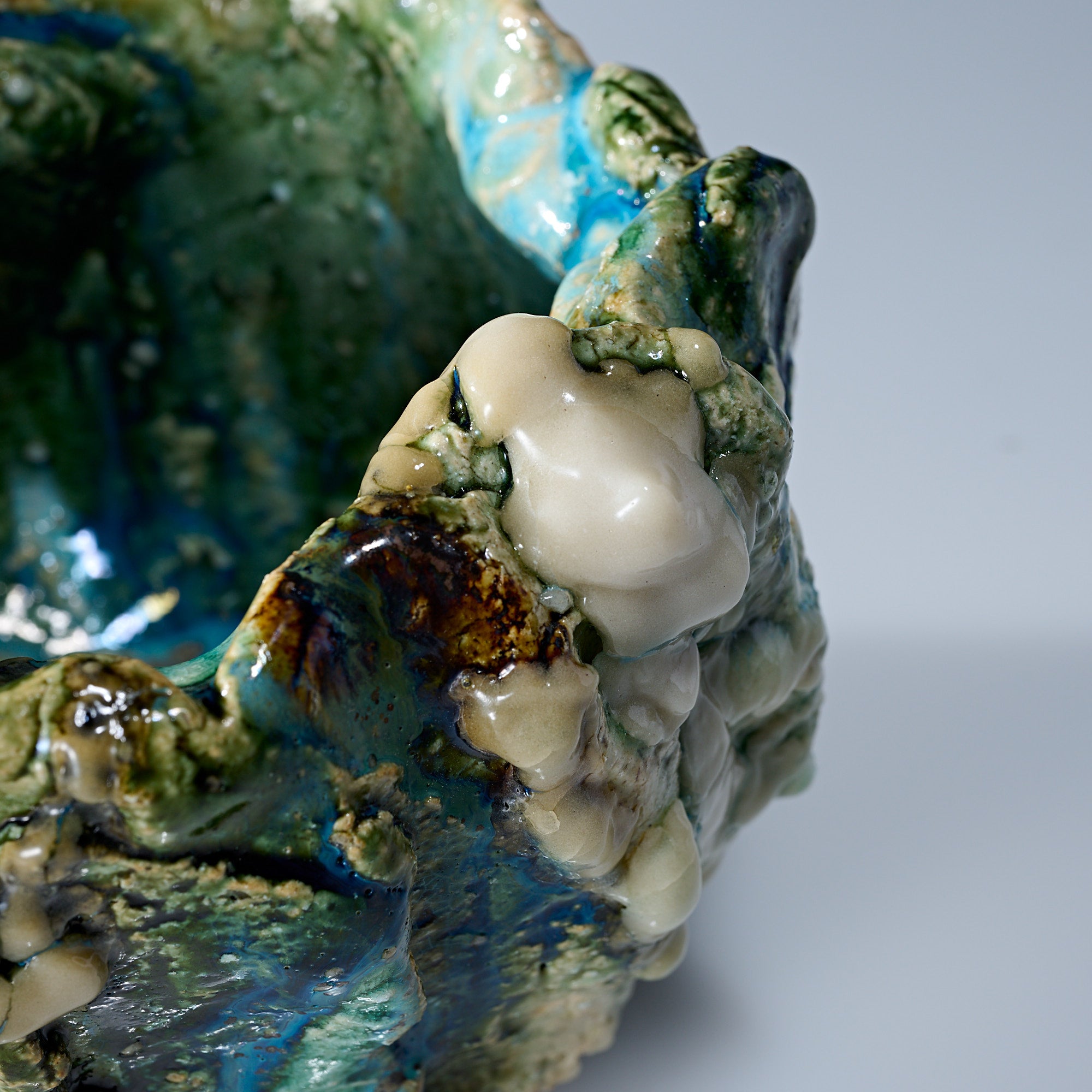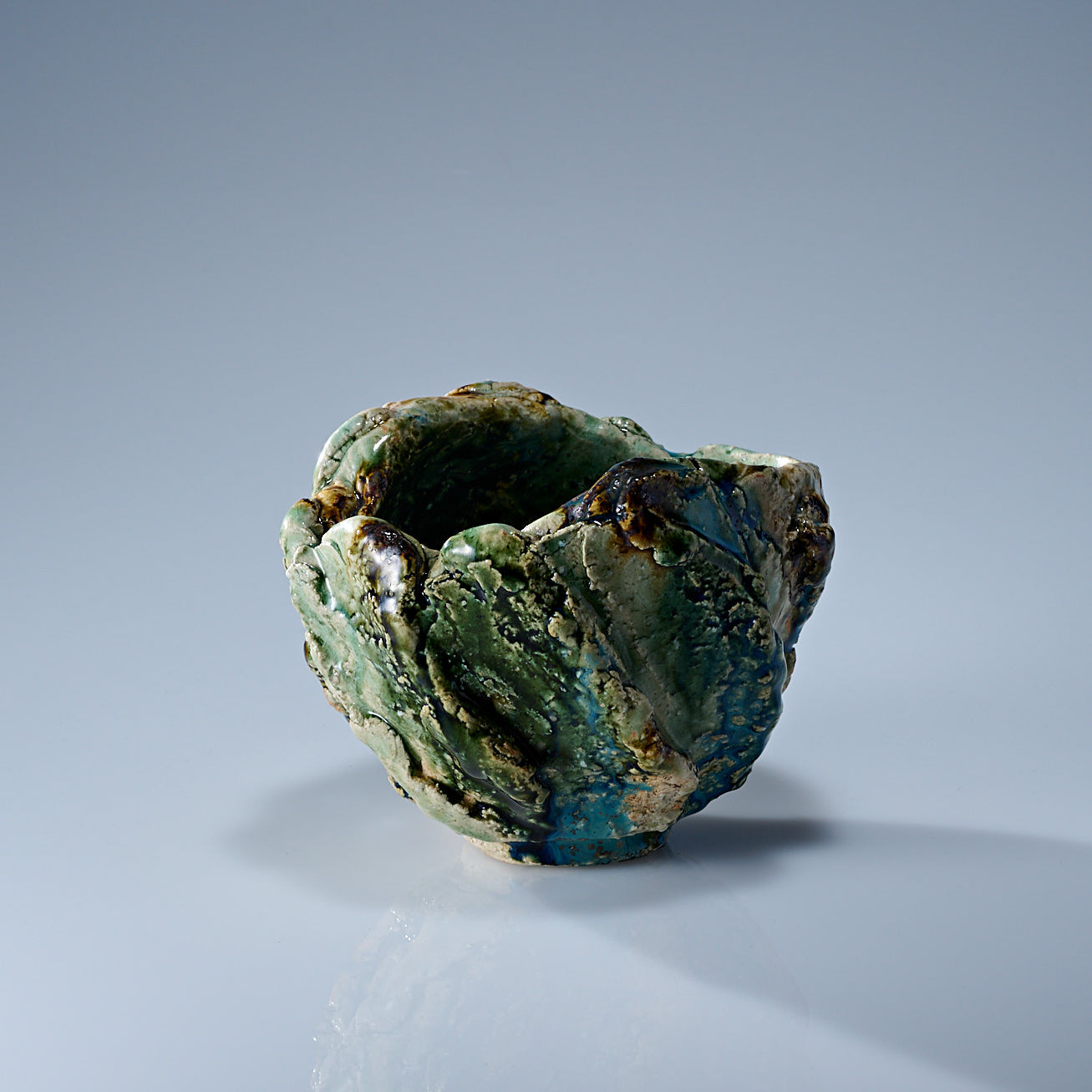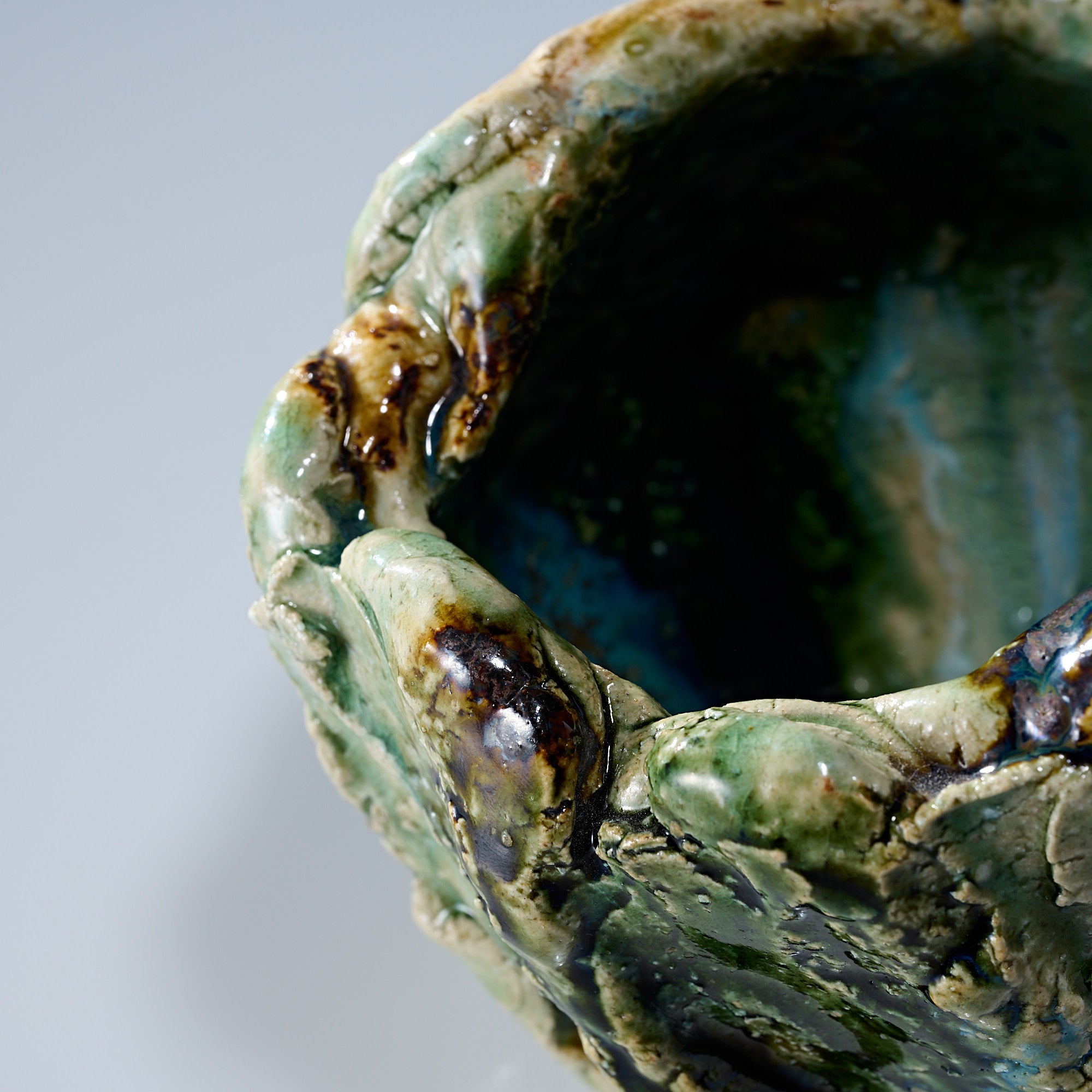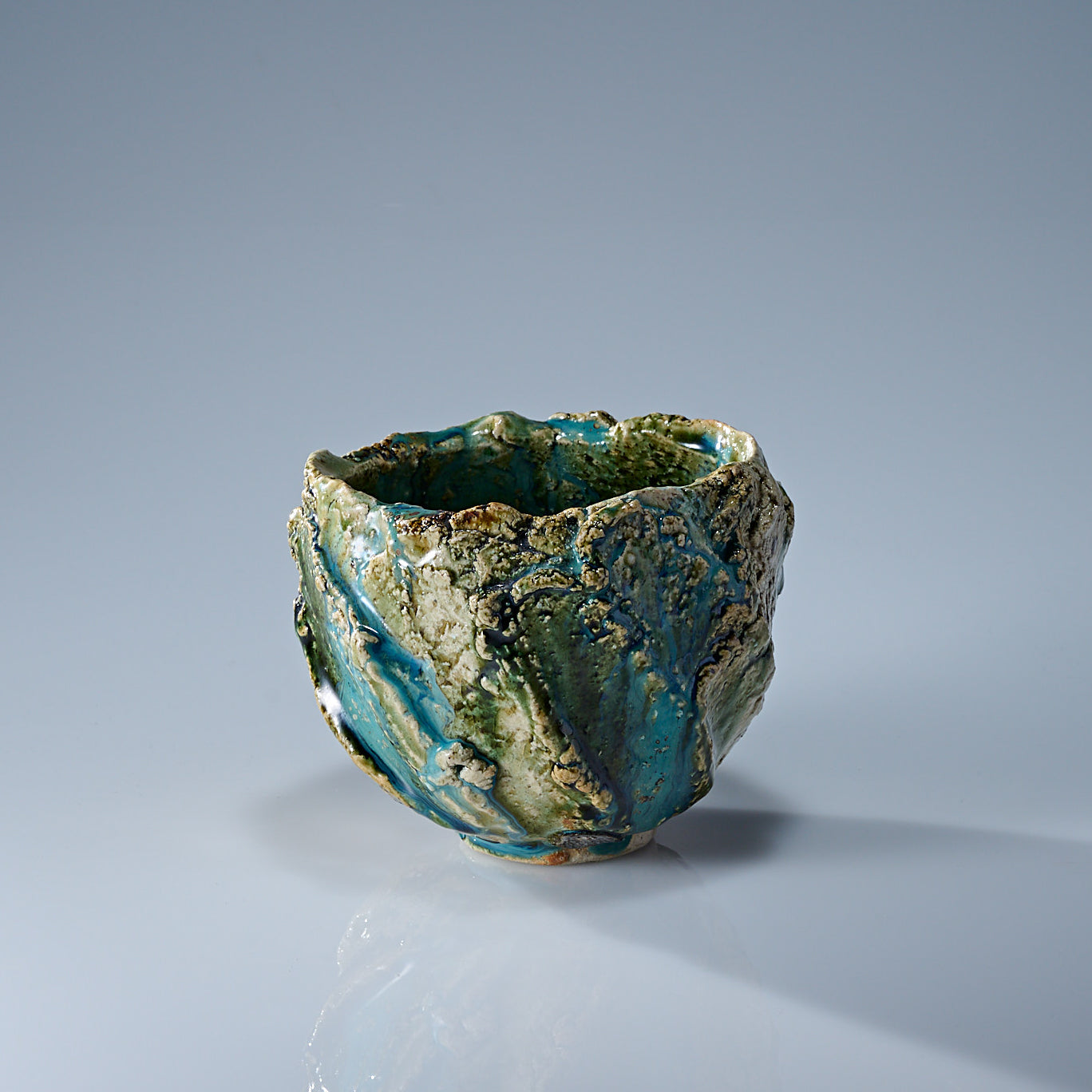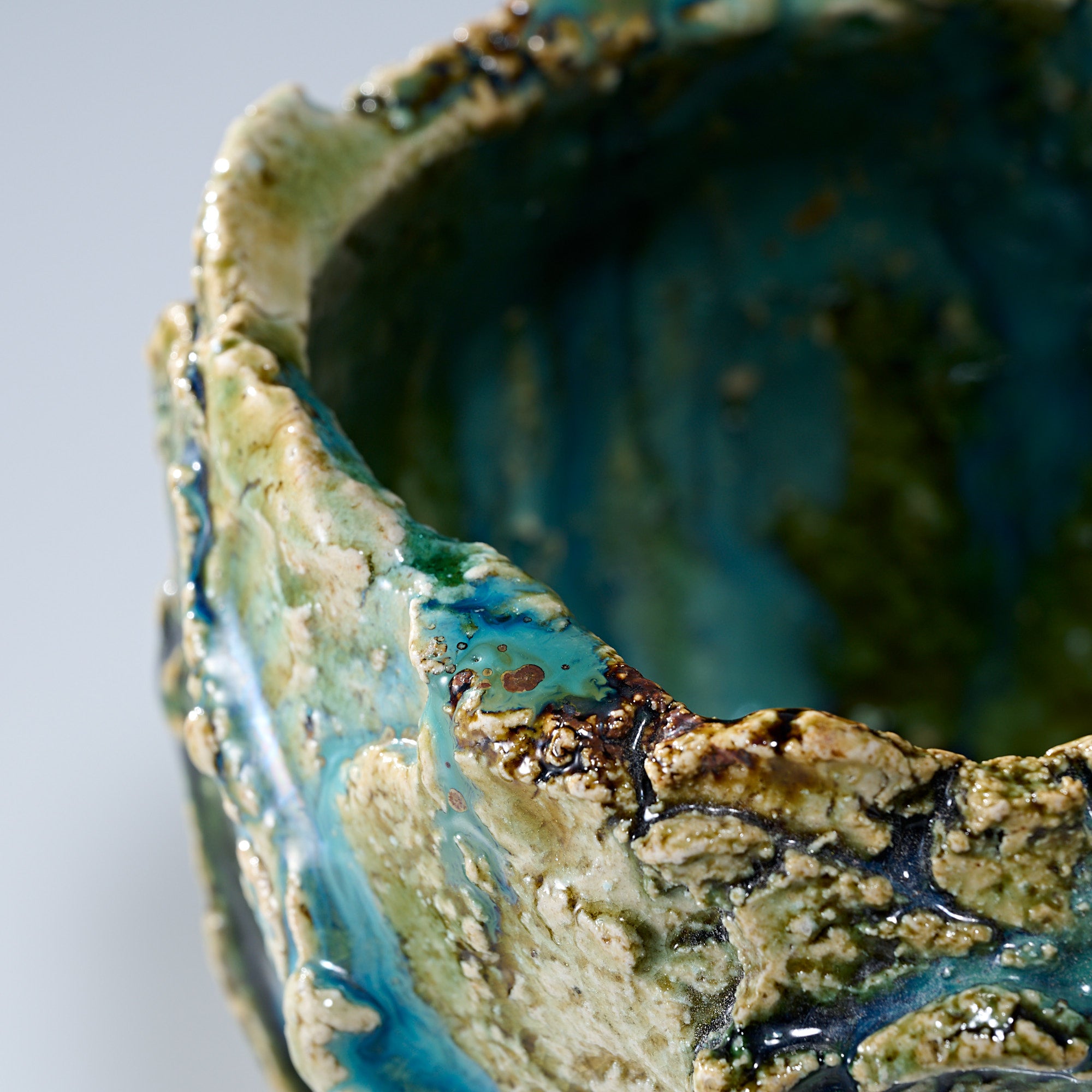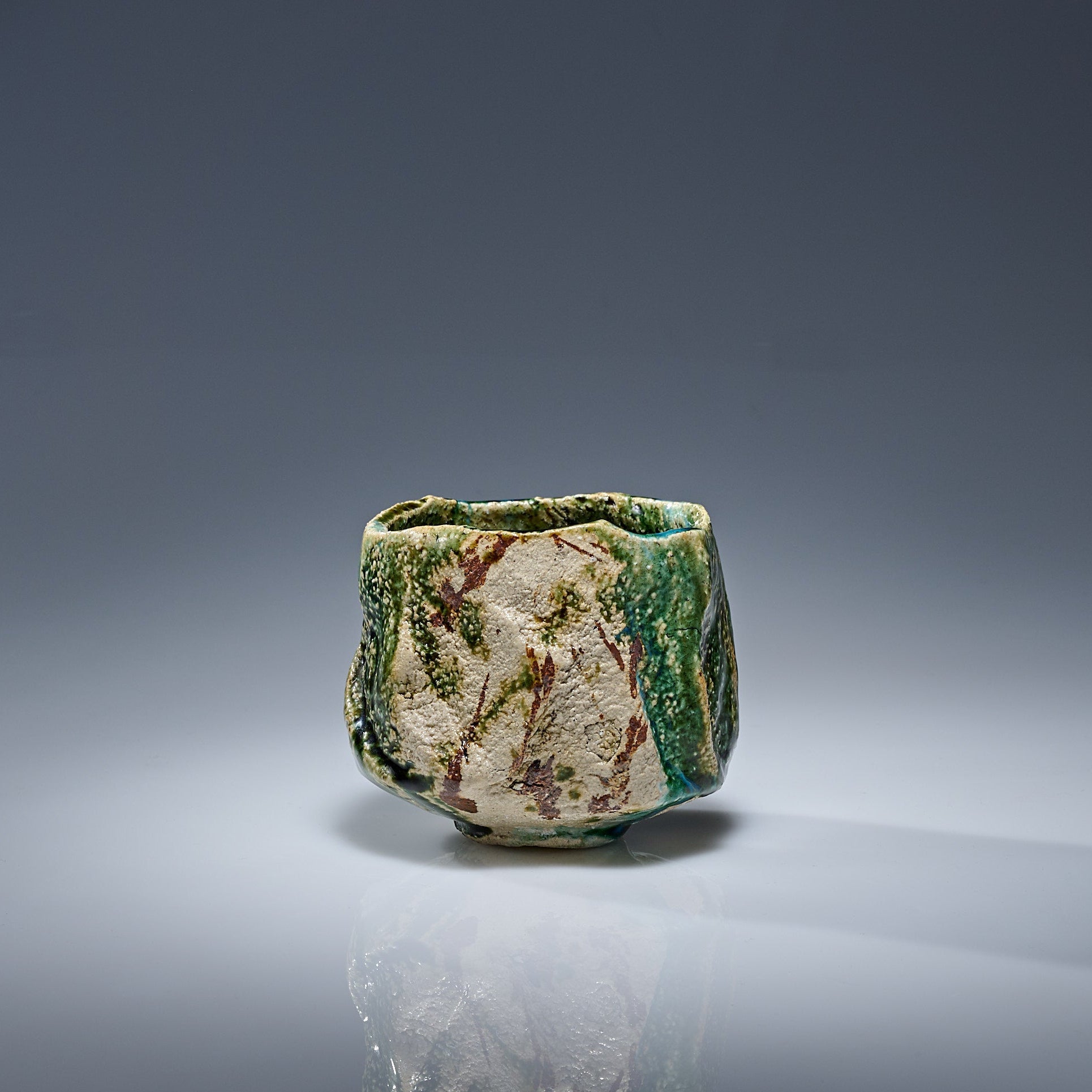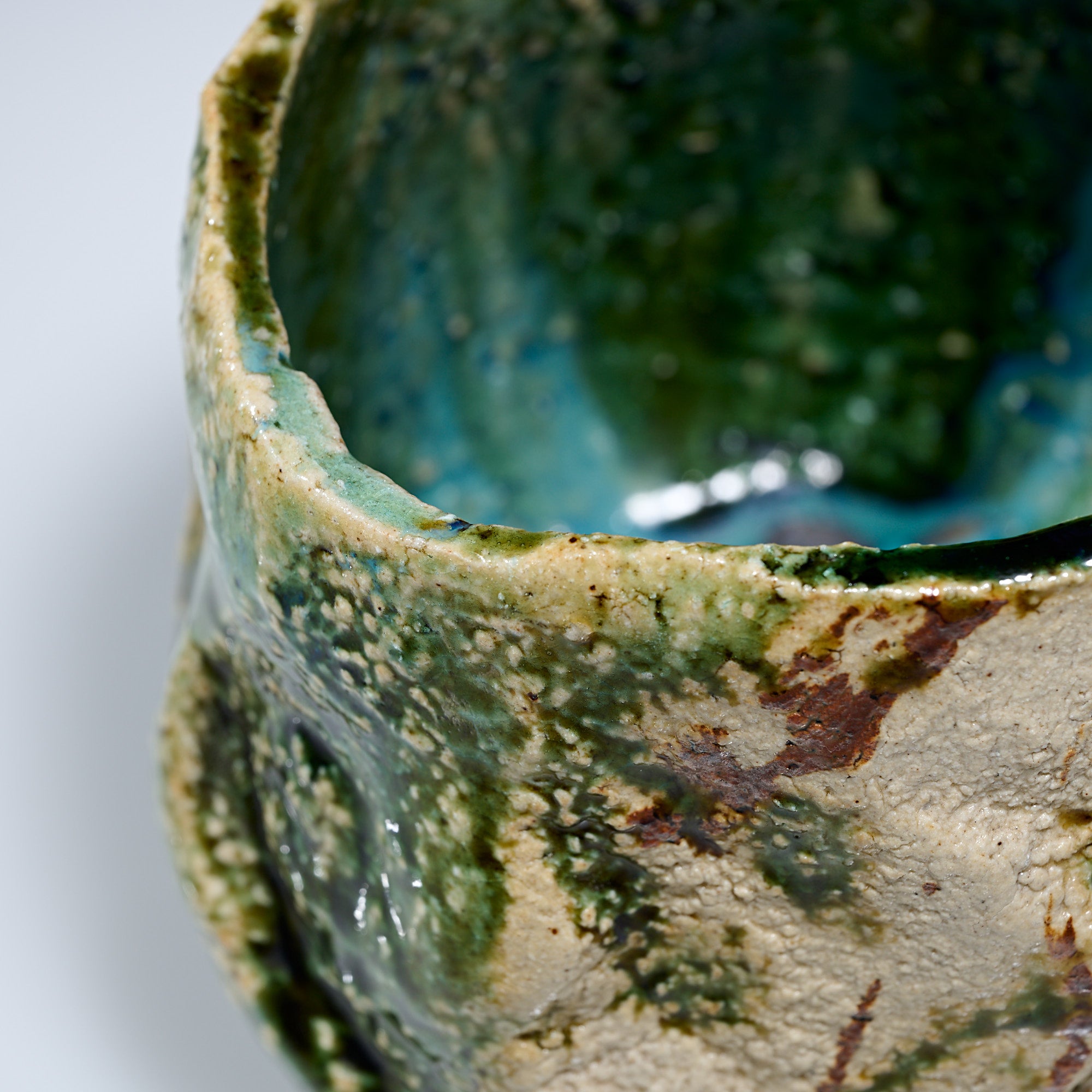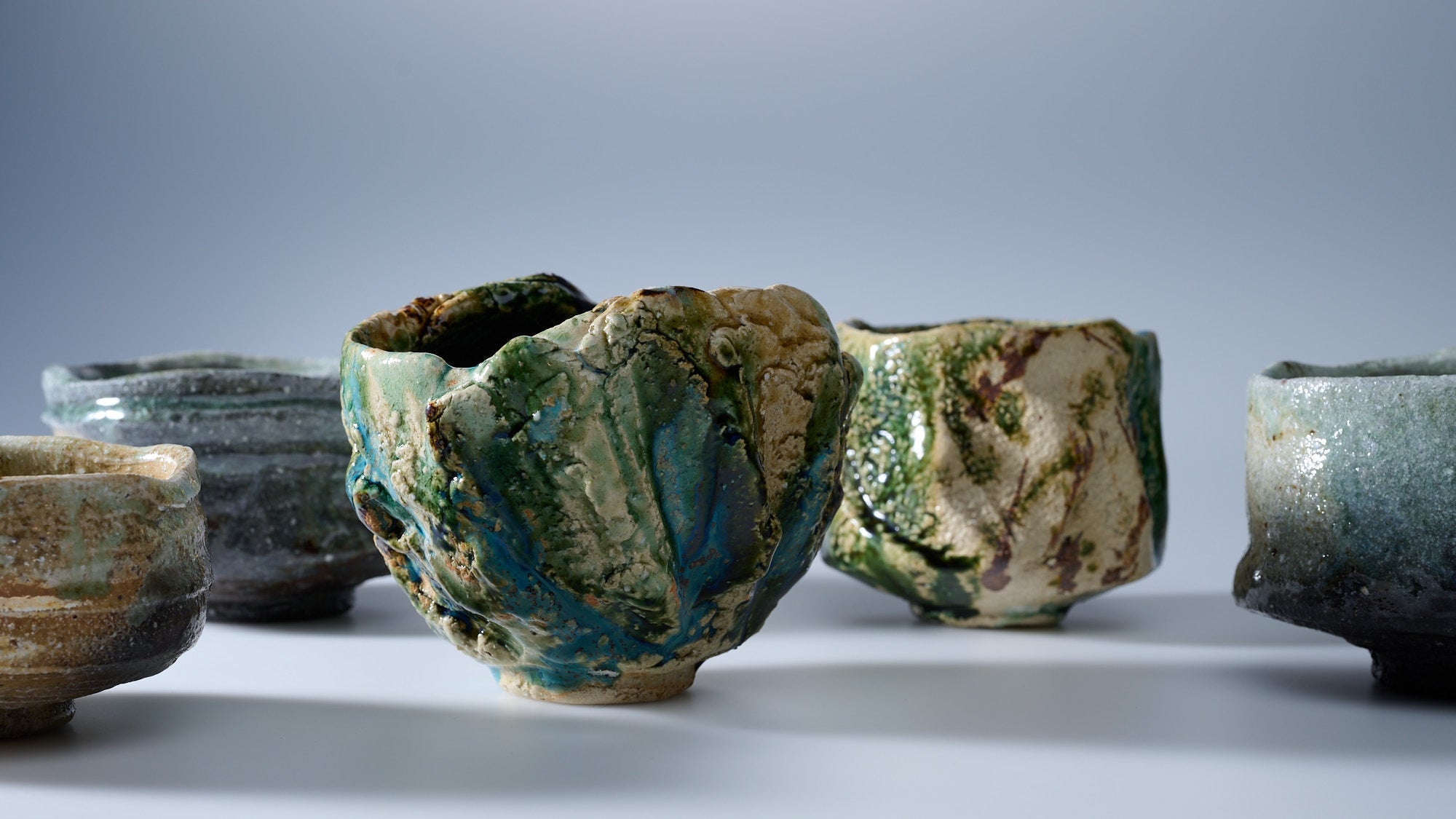
Iga Ware
Iga ware, produced in the Iga region of Mie Prefecture, is celebrated for its deep roots in Japanese ceramic history and its distinctive character. With a lineage stretching back some 1,200 years, Iga ware rose to prominence during the Momoyama period (1573–1615 CE), when it became closely tied to the aesthetics of the tea ceremony.
As a form of traditional Japanese pottery, Iga ware is admired for its robust clay, earthy texture, and the organic beauty that emerges through various firing methods. The natural ash glazing and translucent green, glass-like vidro effects created by the intense heat of the kiln reveal the expressive artistry that defines Iga ware.
Iga ware traces its beginnings to the Nara period (710–794 CE), when potters primarily produced everyday vessels such as mortars and storage jars, pieces that bore little distinction from neighboring Shigaraki ware. Its true turning point came much later, in the Momoyama period, an age that saw the flowering of tea culture and the spirit of wabi-sabi.
Under the patronage of local lords like Tsutsui Sadatsugu and Todo Takatora, Iga ware developed a bold new character. Artisans experimented with deliberate irregularities—hand-shaping asymmetrical forms, carving wave-like patterns with spatulas, and embracing surfaces that carried a sense of incompletion, a beauty found in imperfection that resonated deeply with tea masters, including Sen no Rikyu.
During this period, craftsmen produced water jars and flower vases in particular, vessels that embodied the subdued elegance sought in tea practice. Although production ceased at the close of the Momoyama era, it was revived in the mid-18th century, this time to supply households with sturdy everyday utensils. That dual legacy—of refined tea ceramics and practical daily ware—remains central to Iga ware today, a tradition still alive after more than twelve centuries.
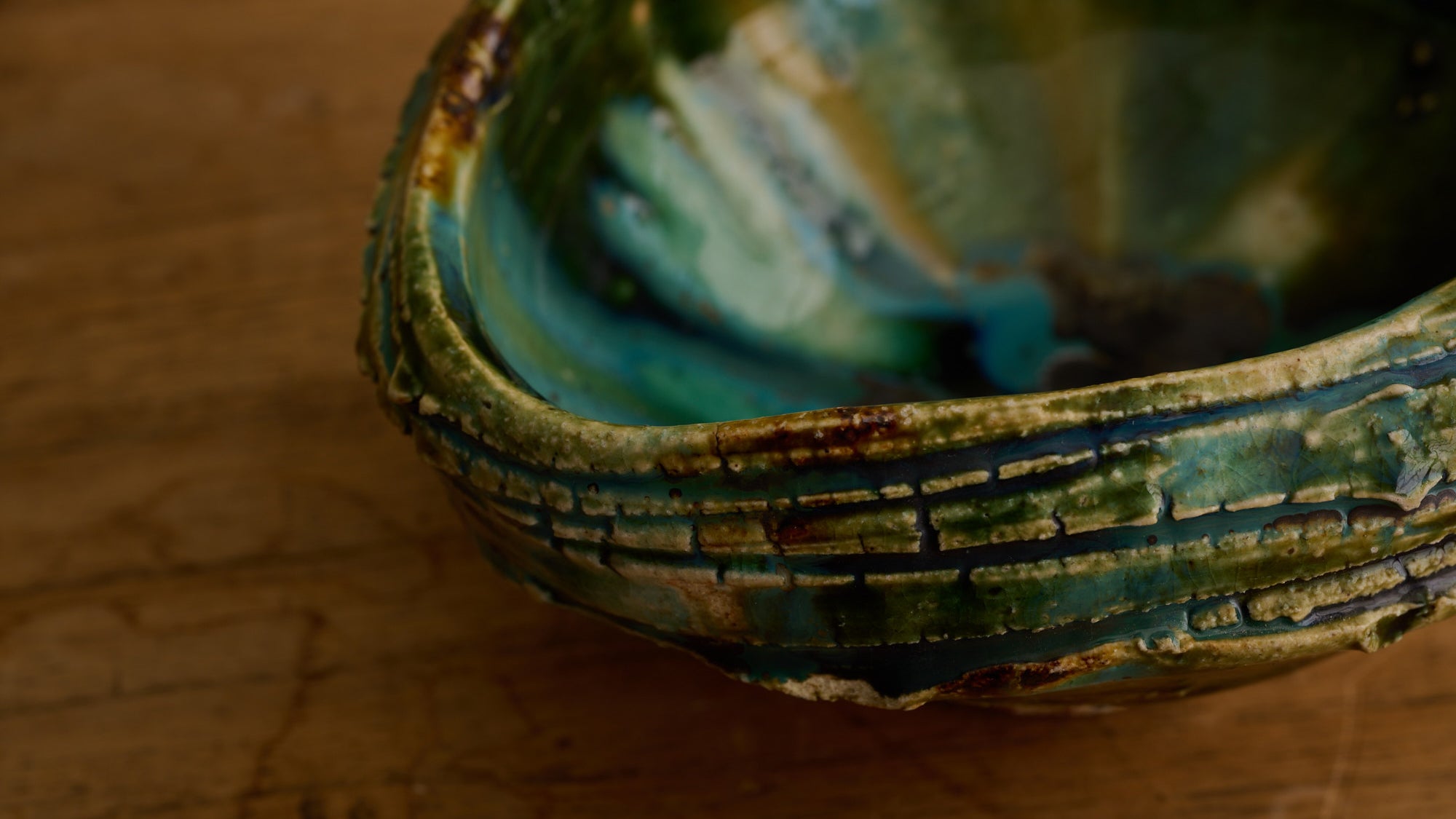
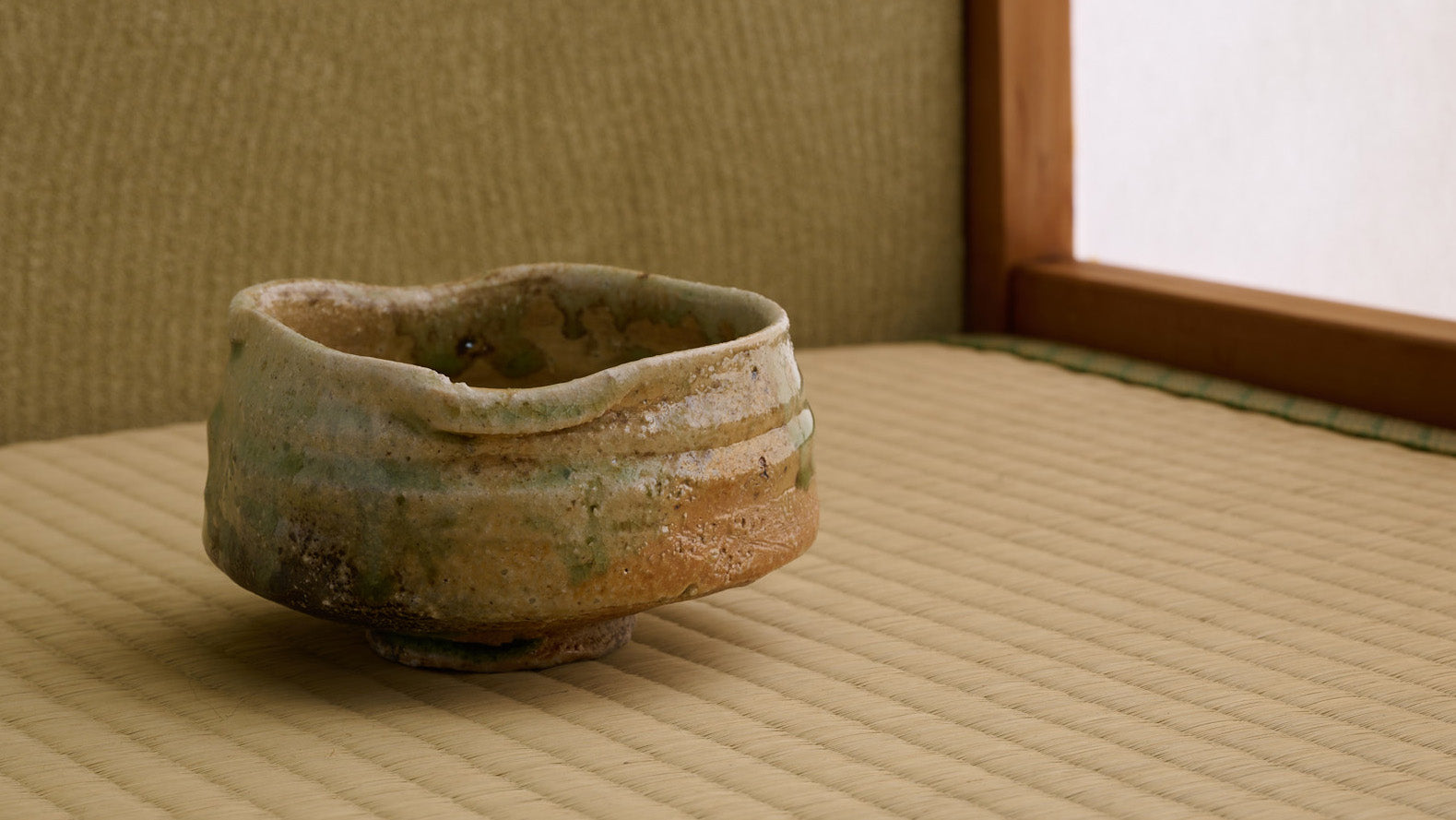
One of the defining features of Iga ware is the interplay of surface and fire. When fired at extremely high temperatures, the clay produces two striking effects: a vidro glaze showing a myriad of greens, from pale celadon to deep olive, depending on the kiln atmosphere, and a firm, reddish body with a raw, rugged texture. The vidro glaze forms when wood ash falls onto the vessel during firing and melts into translucent, glass-like streaks. Far from being left to chance, this effect is carefully considered by the potter, who anticipates how the ash will fall and where it will fuse with the clay.
Another defining feature of Iga ware is what the Japanese describe as “Iga has ears, Shigaraki has none.” “Ears” refer to small handles attached to the shoulders or rim of a vessel. In Iga ware, it is common to see pieces with a pair of these protrusions. Originally, they served a practical function, making the vessels easier to lift and carry. Through the potter’s experimentation, these “ears” evolved into distinctive accents that add rhythm and presence to the otherwise rugged body of Iga ware.
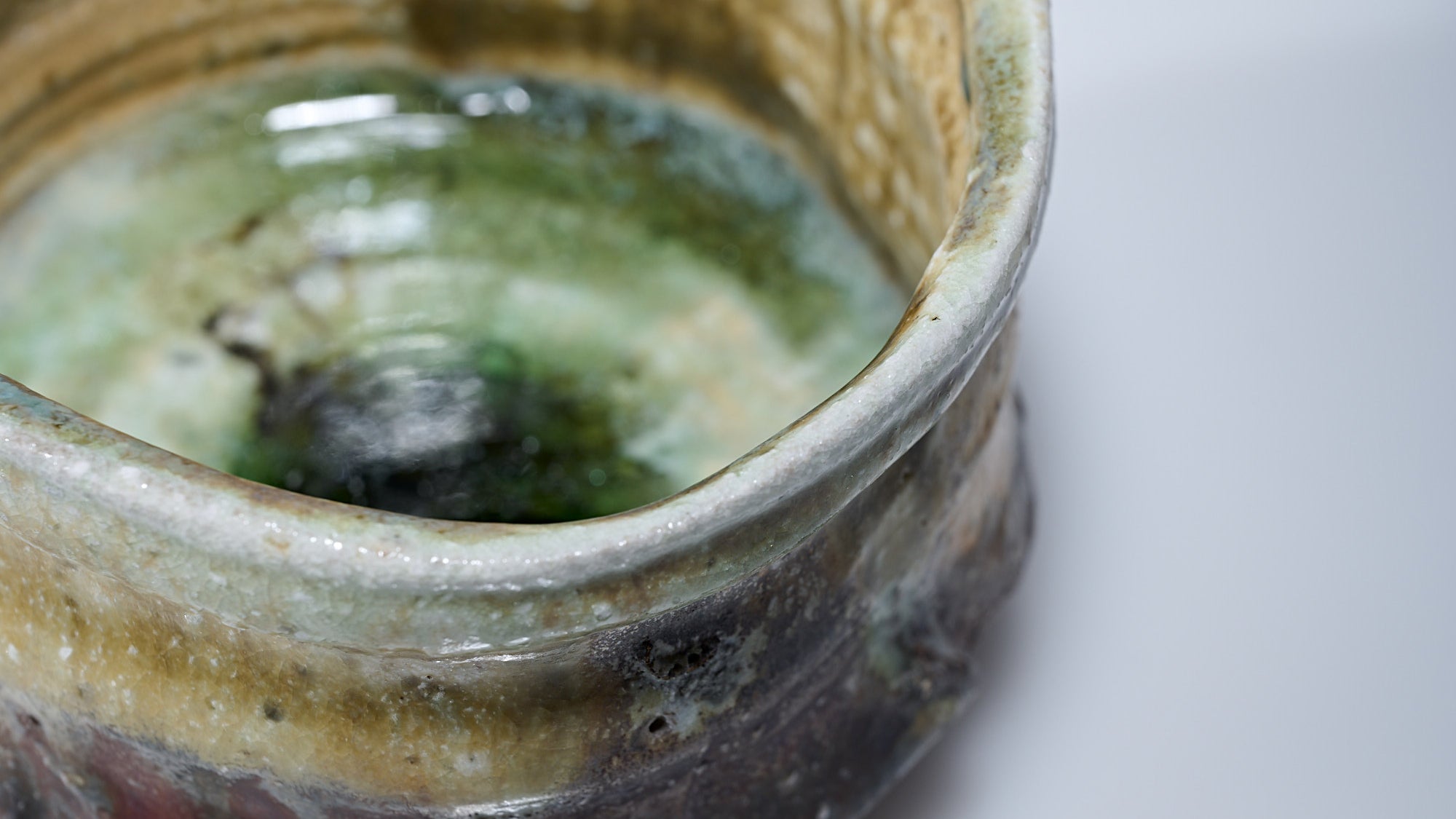
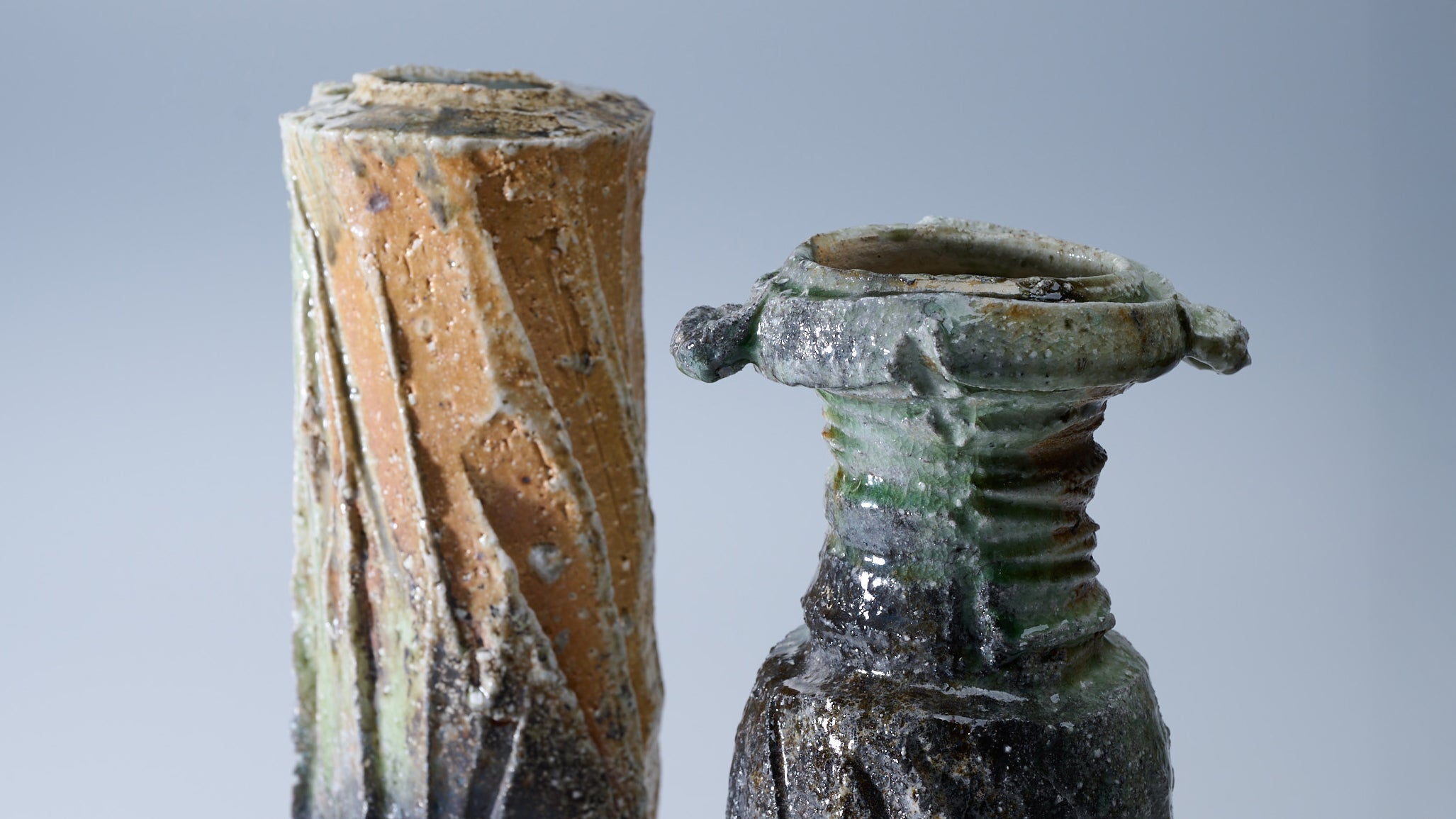
Makers
Filters


